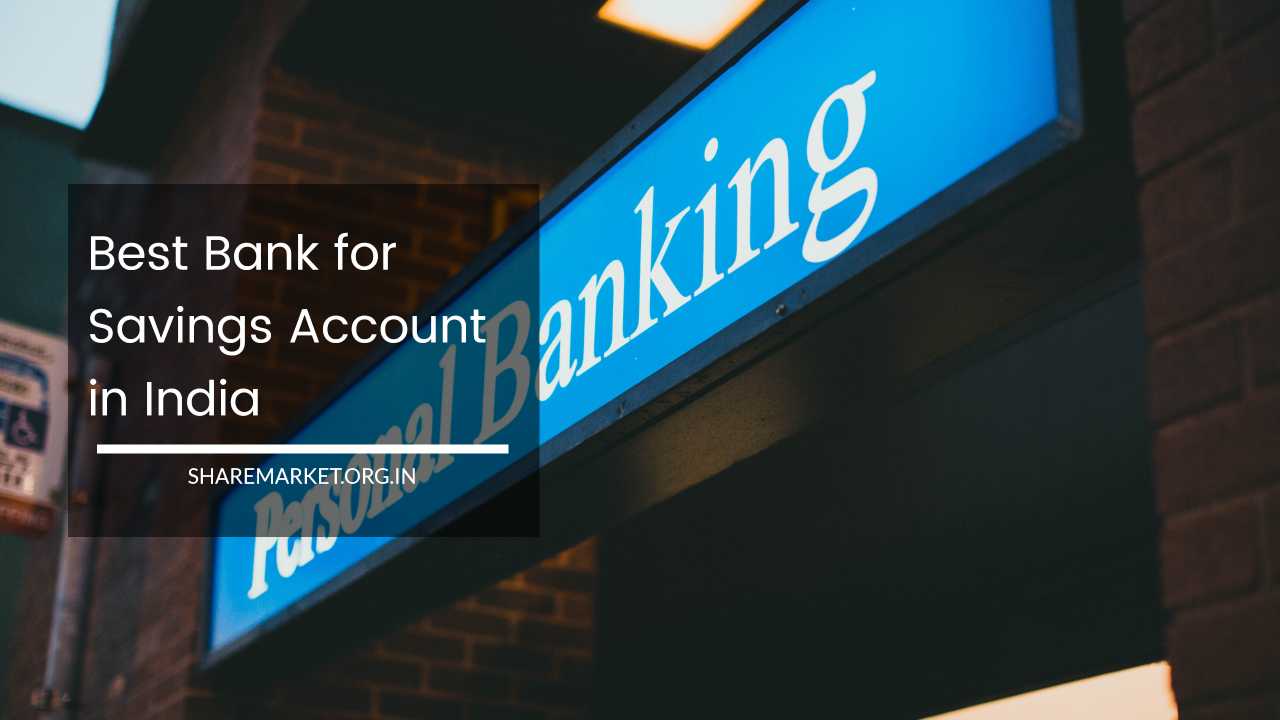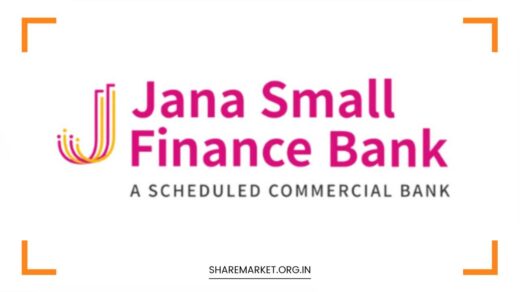Best Bank for Savings Account in India

Best Bank for Savings Account
Best Bank for Savings Account in India: A Comprehensive Guide
Choosing the best bank for your savings account in India can be a challenging endeavor given the vast array of banking options available.
Each bank offers different interest rates, fee structures, digital banking features, and customer service standards.
This comprehensive guide aims to help you navigate these choices by analyzing various banks and their offerings, ultimately assisting you in making an informed decision that aligns with your financial goals and preferences.
Understanding Savings Accounts
A savings account is a fundamental banking product that allows individuals to deposit money, earn interest, and withdraw funds as needed.
It is a popular choice for parking surplus funds safely while earning a modest return. Beyond the basic function of storing money, savings accounts come with a range of features and benefits, including access to a chequebook, ATM card, and online banking facilities.
Key Features of Savings Accounts
- Interest Rate: The interest rate determines how much your deposited funds will grow over time. Higher interest rates offer better returns, making it a crucial factor when selecting a savings account. Banks often offer varying interest rates based on the type of savings account and the balance maintained.
- Minimum Balance Requirement: Most savings accounts require a minimum balance to be maintained. Failing to meet this requirement can lead to penalties or additional charges. Some banks offer accounts with low or no minimum balance requirements, which can be advantageous for those who prefer not to maintain a large sum in their accounts.
- Fees: Banks may charge fees for various services, including issuing a chequebook, ATM transactions beyond a certain limit, and account maintenance. Understanding these fees and how they might affect your savings is essential for making an informed choice.
- Digital Banking: With the rise of technology, digital banking has become increasingly important. Features such as online banking, mobile apps, and digital wallets allow you to manage your account, transfer funds, and pay bills conveniently from anywhere. Evaluating the quality and functionality of a bank’s digital services is crucial.
- Customer Service: Quality customer service can significantly impact your banking experience. Efficient and responsive customer support can help resolve issues quickly and provide assistance when needed. Look for banks with a reputation for good customer service.
- Branch Network: A bank’s branch network determines how easily you can access physical branches for in-person banking needs. If you prefer face-to-face interactions or need to visit branches frequently, a bank with an extensive network may be more suitable.
- Additional Features: Some savings accounts come with extra benefits such as overdraft facilities, debit card rewards, insurance coverage, or financial advisory services. These additional features can enhance the value of your savings account and provide added convenience.
Top Banks for Savings Accounts in India
The Indian banking sector comprises public sector banks (PSBs), private sector banks, and small finance banks (SFBs).
Each category has its strengths and offers unique savings account options. Here’s an overview of some prominent banks in each category:
Public Sector Banks (PSBs)
- State Bank of India (SBI)
- Overview: SBI is India’s largest and one of the oldest public sector banks, with a vast branch network and a wide range of savings account options. Its size and reach make it a popular choice for many customers.
- Interest Rates: SBI offers competitive interest rates on its savings accounts. Although generally lower than those of private sector banks, they are still attractive, especially for accounts with higher balances.
- Features: SBI provides various types of savings accounts, including the Regular Savings Account, Premium Savings Accounts, and accounts tailored for senior citizens. These accounts come with benefits like a chequebook facility, ATM card, and online banking.
- Digital Banking: SBI has a robust digital banking platform with an intuitive online and mobile banking interface, allowing easy account management and transactions.
- Branch Network: Extensive, with branches in almost every part of the country, including rural and remote areas.
- Bank of Baroda (BOB)
- Overview: BOB is known for its strong digital banking platform and competitive interest rates. It offers a variety of savings accounts to cater to different customer needs.
- Interest Rates: Competitive, with rates that are often on par with or slightly lower than those of private sector banks.
- Features: BOB offers a range of savings accounts, including the BOB World Savings Account, which provides additional features such as online banking and mobile app access.
- Digital Banking: Strong digital presence with user-friendly online and mobile banking services.
- Branch Network: Wide, though not as extensive as SBI’s network, it still provides significant coverage.
- Punjab National Bank (PNB)
- Overview: PNB offers a blend of traditional banking services with modern digital solutions. It is well-regarded for its customer service and range of savings account options.
- Interest Rates: Competitive, with rates comparable to other major PSBs.
- Features: Includes basic savings accounts, premium accounts with higher interest rates, and accounts with added benefits such as free insurance.
- Digital Banking: Good, with ongoing improvements in online and mobile banking services.
- Branch Network: Extensive, particularly in Northern India, providing good accessibility.
Private Sector Banks
- HDFC Bank
- Overview: HDFC Bank is a leader in the private banking sector, known for its customer-centric approach and advanced digital services. It offers a variety of savings accounts with different features.
- Interest Rates: Competitive, often offering higher rates than many PSBs.
- Features: HDFC Bank provides various savings accounts, including the SavingsMax Account and the Regular Savings Account, which come with benefits such as free ATM withdrawals and access to a wide range of digital services.
- Digital Banking: Excellent, with an advanced online and mobile banking platform that includes features like virtual debit cards and seamless fund transfers.
- Branch Network: Large, with branches across urban and semi-urban areas, ensuring good accessibility.
- ICICI Bank
- Overview: ICICI Bank is known for its technological innovations and customer service. It offers a range of savings account options designed to meet diverse customer needs.
- Interest Rates: Competitive, with rates often higher than those offered by PSBs.
- Features: ICICI Bank’s savings accounts include standard options and premium accounts with additional benefits like higher interest rates and exclusive offers.
- Digital Banking: Excellent, with a sophisticated online banking platform and a highly-rated mobile app.
- Branch Network: Extensive, with a strong presence in both urban and rural areas.
- Axis Bank
- Overview: Axis Bank provides a balance between traditional banking services and modern digital solutions. Its savings accounts come with various features to cater to different customer preferences.
- Interest Rates: Competitive, with attractive rates for different types of savings accounts.
- Features: Offers several savings account types, including the Insta Save Account and Priority Accounts, which come with perks such as higher interest rates and premium services.
- Digital Banking: Good, with a reliable online and mobile banking interface.
- Branch Network: Large, with extensive coverage across urban and rural regions.
- Kotak Mahindra Bank
- Overview: Kotak Mahindra Bank is known for its innovative banking solutions and competitive interest rates. It offers a range of savings accounts with various features.
- Interest Rates: Competitive, often higher than those of many PSBs.
- Features: Includes the Kotak 811 digital savings account, which offers a high interest rate and easy online account opening, as well as traditional savings accounts with additional benefits.
- Digital Banking: Excellent, with a highly-rated mobile app and a strong online banking platform.
- Branch Network: Large, with a growing presence across the country.
Small Finance Banks (SFBs)
- Bandhan Bank
- Overview: Bandhan Bank focuses on providing financial services to the unbanked and underbanked populations, with a range of basic savings account options.
- Interest Rates: Competitive, with rates comparable to those of larger banks.
- Features: Offers basic savings accounts designed to be accessible and user-friendly.
- Digital Banking: Good, with a functional online banking platform that supports essential transactions.
- Branch Network: Expanding, with a focus on rural and semi-urban areas.
- Equitas Small Finance Bank
- Overview: Equitas offers a variety of savings and deposit products with a strong emphasis on customer service.
- Interest Rates: Competitive, with rates designed to attract and retain customers.
- Features: Includes both regular savings accounts and high-interest savings accounts.
- Digital Banking: Good, with a solid online and mobile banking platform.
- Branch Network: Growing, with a focus on accessibility in underserved areas.
Comparing Savings Account Features
To help you make a more informed decision, here’s a comparison of some key features of popular savings accounts offered by different banks:
| Feature | SBI | HDFC Bank | ICICI Bank | Axis Bank | Kotak Mahindra Bank |
|---|---|---|---|---|---|
| Interest Rate | Competitive | Competitive | Competitive | Competitive | Competitive |
| Minimum Balance | Varies | Varies | Varies | Varies | Varies |
| Digital Banking | Good | Excellent | Excellent | Good | Excellent |
| Branch Network | Extensive | Large | Large | Large | Large |
| Customer Service | Good | Good | Good | Good | Good |
Note: Interest rates, minimum balance requirements, and other terms and conditions are subject to change. Always verify the latest details before making a decision.
Choosing the Right Savings Account
Selecting the right savings account requires evaluating your specific needs and preferences. Consider the following factors:
Your Banking Habits
- Frequency of Branch Visits: If you frequently visit branches, choose a bank with a broad branch network. For those who prefer online transactions, a bank with strong digital services might be more suitable.
- Online vs. Offline Banking: Assess your comfort level with online and mobile banking. If you are tech-savvy and prefer digital transactions, prioritize banks with advanced online banking features.
Your Financial Goals
- Short-term vs. Long-term Savings: For short-term goals, such as an emergency fund, a savings account with easy access and a reasonable interest rate may suffice. For long-term goals, consider accounts that offer higher interest rates or additional features like fixed deposits or recurring deposit options.
Your Risk Tolerance
- Interest Rate Stability: Some banks offer variable interest rates that can fluctuate with market conditions. If you prefer stability, look for accounts with fixed interest rates or features that provide predictable returns.
Your Lifestyle
- Branch Network vs. Digital Services: If you live in an area with limited banking facilities, choose a bank with a large branch network. Conversely, if you value convenience and efficiency, a bank with excellent digital services may be more appropriate.
Additional Tips
- Compare Multiple Banks: Don’t limit yourself to a single option. Compare interest rates, fees, and features across different banks to find the best fit for your needs. Use online comparison tools and visit bank websites for up-to-date information.
- Read the Fine Print: Understand the terms and conditions associated with each savings account. Pay attention to any hidden charges, restrictions, or requirements that could impact your account.
- Consider Additional Benefits: Some banks offer additional perks such as rewards programs, insurance coverage, or financial advisory services. Evaluate these benefits to maximize the value of your savings account.
- Review Regularly: Periodically review your savings account to ensure it continues to meet your needs. Changes in your financial situation or new bank offerings might prompt you to switch accounts for better benefits or services.
- Customer Reviews: Consider reading customer reviews and feedback about the bank’s services, especially regarding customer service, digital banking, and overall satisfaction. Real-life experiences can provide valuable insights into the bank’s performance.
- Financial Goals Alignment: Ensure that the savings account you choose aligns with your financial goals. If you plan to save for specific goals like a house or education, look for accounts that offer features tailored to those needs.
- Special Offers: Keep an eye out for special offers or promotions that banks may provide for new customers. These could include higher interest rates, waived fees, or other benefits that enhance the value of the account.
Final Remarks
Selecting the best savings account in India involves evaluating various factors such as interest rates, minimum balance requirements, fees, digital banking capabilities, customer service, and branch network.
By considering your individual needs, banking habits, financial goals, and lifestyle preferences, you can make a well-informed decision.
Public sector banks like SBI, BOB, and PNB offer extensive branch networks and competitive interest rates, making them suitable for customers who value traditional banking services.
Private sector banks like HDFC Bank, ICICI Bank, Axis Bank, and Kotak Mahindra Bank excel in digital banking and customer service, making them ideal for those who prioritize modern banking features. Small finance banks like Bandhan Bank and Equitas Small Finance Bank provide basic savings account options with a focus on accessibility and customer service.
By comparing different banks and their offerings, understanding the features of various savings accounts, and considering your personal preferences and financial goals, you can choose the savings account that best fits your needs.
Regularly reviewing your account and staying informed about changes in banking products will help you make the most of your savings and achieve your financial objectives.

















